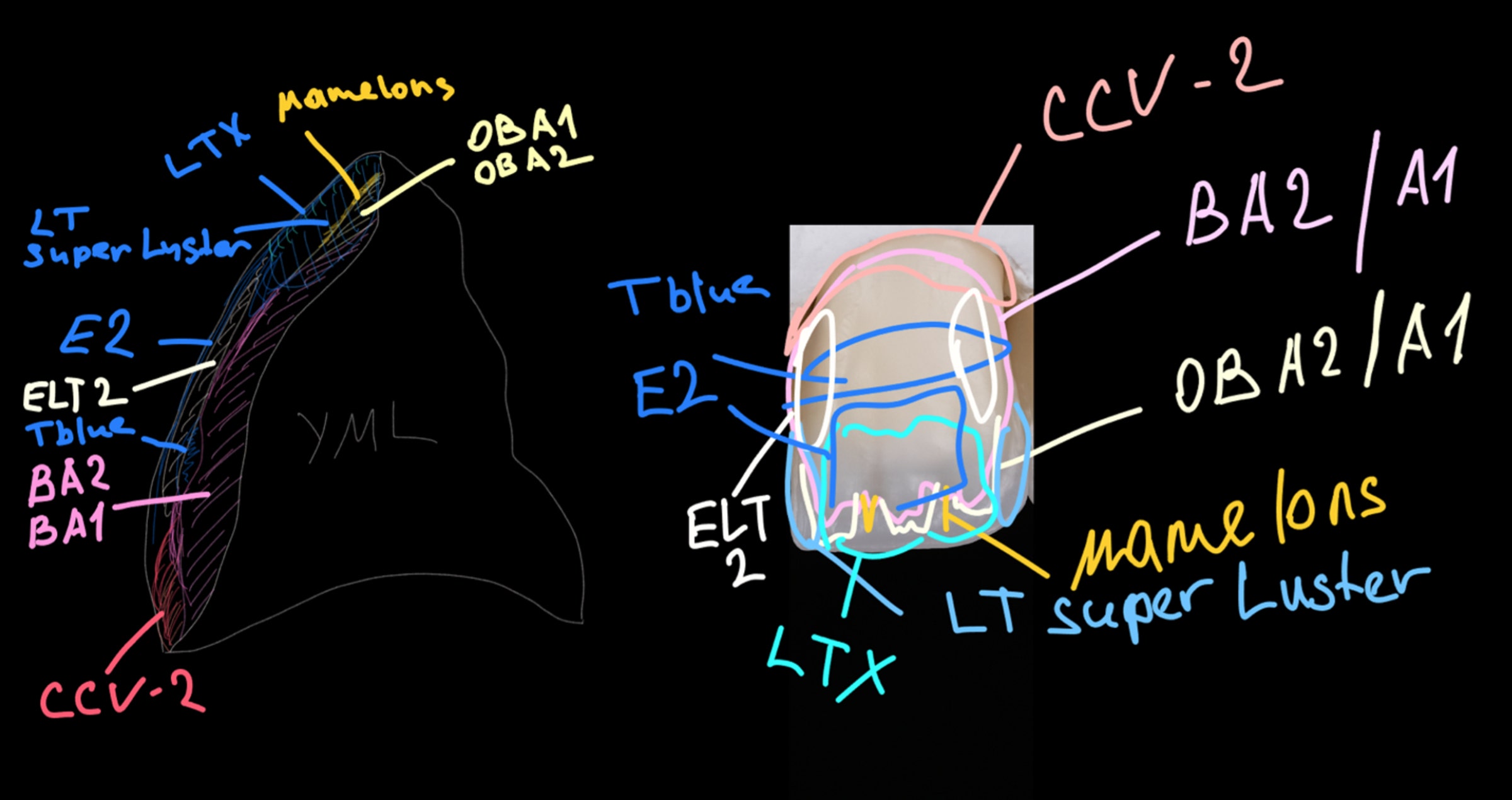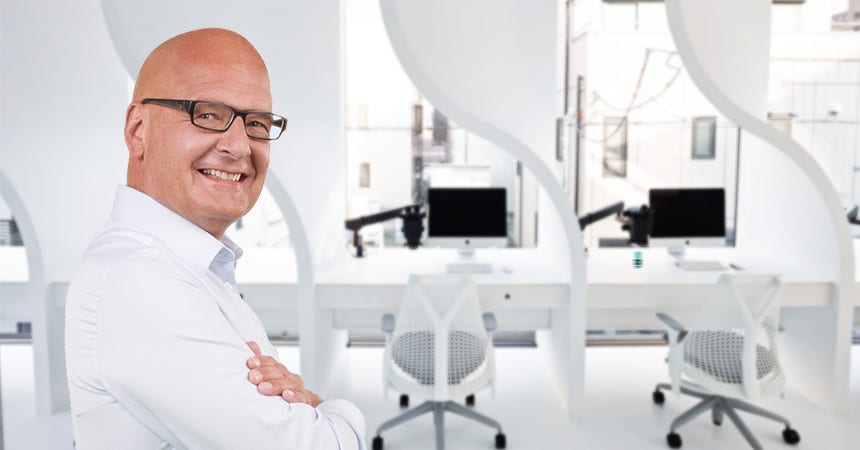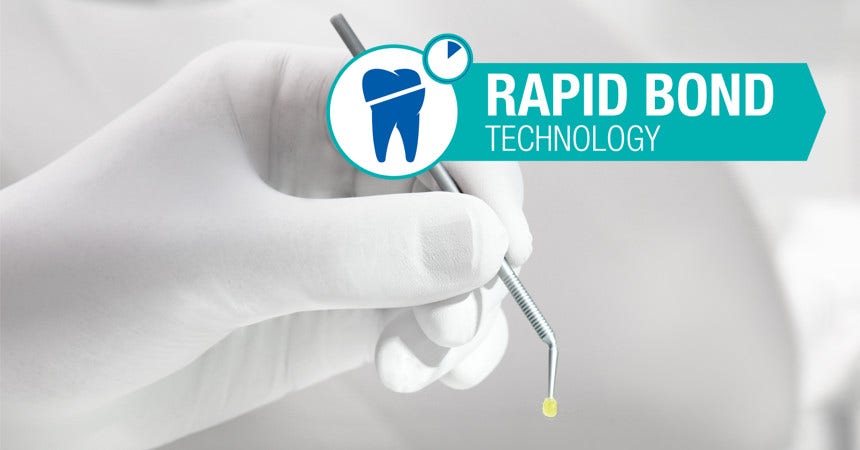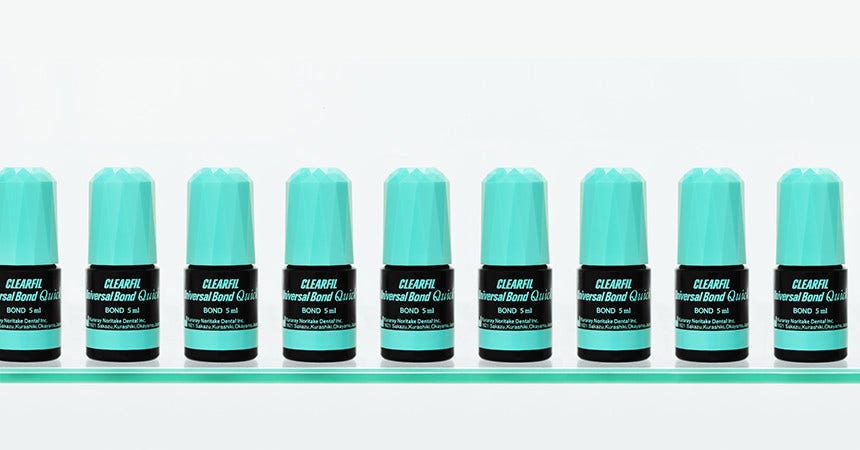Reliable adhesive cementation of zirconia
10-Methacryloyloxydecyl Dihydrogen Phosphate is a bit of a tongue-twister for anyone who is not a chemist by profession, so in everyday communication, this adhesive monomer is referred to by the three initial letters: MDP. MDP is indispensable in the dentistry business. For example, reliable adhesive cementation of zirconia restorations would not be possible without MDP. This adhesive monomer was developed by Kuraray Noritake Dental in 1981.
Requirements
Indirect restorations in modern dentistry must fulfil at least three requirements. First of all, they must be tissue-saving. This implies that a full crown is not the first choice, because approximately 70% of the tooth tissue has to be sacrificed for such a restoration. Nevertheless, full crowns are often still indicated by virtue of their mechanical retention. But given that the retention which can be achieved by adhesive cementation is now sufficiently reliable, a less invasive restoration than a crown should be chosen more often. And this choice may very well be for a zirconia restoration. Combined with the preliminary sandblasting of such an adhesive restoration, this choice is now an appropriate one thanks to MDP.
Durability is the second requirement for an indirect restoration. This quality of a restoration is largely associated with the flexural strength of the restoration material. While it has become clear that zirconia achieves the best durability scores, it should be pointed out that the cementation method also contributes significantly to the durability of a facing, inlay, onlay, etching bridge etc., which can nowadays all be realised in zirconia.
KATANA Zirconia UTML
KATANA Zirconia STML
KATANA Zirconia ML
AESTHETICS
Aesthetic acceptability is the third requirement for a modern indirect restoration. This means that porcelain baked on metal has become a thing of the past; full-ceramic materials are now the standard. Zirconia still has a relatively poor reputation in terms of aesthetics due to the extreme whiteness of the earliest examples from the turn of the century. Types of zirconia are now available with varying translucencies, and there are even so-called multi-layer varieties (KATANA Zirconia ML, STML and UTML by Kuraray Noritake), and these new zirconia no longer have to be porcelain-baked. Obviously, baking is still possible, and partial baking is a choice that is frequently made. One of the results of a multi-layer build-up is that the transparency is higher incisally than cervically, as it is in natural elements; the light falls through the incisal margin, but is blocked at the cingulum of the restoration. With a modern zirconia material such as KATANA Zirconia ML, this variable transparency goes hand in hand with a natural colour gradient from cervical to incisal. In a given colour, A1 for example, the cingulum has the corresponding dentine shade body and it passes to incisal in the appropriate enamel colour via two transition shades.
These veneers were made from KATANA Zirconia UTML and coloured using CERABIEN ZR External Stain
SURFACE
The new zirconia materials are changing the way dental technicians operate, as illustrated by the experience of Daniele Rondoni, a renowned dental technician. This professional, from Savona in Italy, has specialised in the use of Multi-Layering technology for ceramic materials (Tecnica della Multistratificazione in Ceramica). According to his philosophy, the choice of restoration materials should be so wide that customised solutions can be realised. Among other things, he believes that there will still be room for baked porcelain on a core of lithium disilicate or zirconia. Using baked porcelain, the dental technician can modify the surface texture of an aesthetic restoration to lend, as it were, a certain age to the restoration.
As for surface structure, the fact that the material allows for the smooth polishing of the occlusal plane is crucial to counteract abrasion by the antagonist and to maintain the occlusal balance. In this respect, the hardness of the material selected is not the main factor; the smoothness and resistance of the surface are far more important.
FLEXURAL STRENGTH
When selecting material for restorations, the dental technician also has the option to choose KATANA Zirconia Ultra Translucent Multi-Layered for veneers or anterior crowns; a zirconia with a translucence comparable to that of glass. This translucence is especially important with anterior restoration which is to be fitted between flawless natural elements, a situation that often occurs after anterior traumas. Such a restoration effected using KATANA Zirconia UTML harmonises with the neighbouring natural teeth, not least because this type of zirconia does not cause the frequently-occurring white appearance common in anterior crown. The modern aesthetic zirconia materials of the second generation are sintered at a temperature of 1,550°. This temperature is maintained for two hours. The dental technician needs to be aware that this temperature differs from the sintering temperature for KATANA Zirconia High Translucent Multi-Layered (1,500 °C). Wide-span bridges can be realised with the latter product, whereas the size of bridges made from KATANA Zirconia Super Translucent Multi-Layer remains limited to a maximum of four elements. KATANA Zirconia UTML can be used for small anterior bridges, but is more suitable for anterior crowns and veneers. The reason for this is that the flexural strength of these highly aesthetic zirconia materials is lower than the flexural strength of the standard zirconia, in which the flexural strength – 1,125 MPa – is sufficient for the production of durable widespan bridges. The flexural strength of the highly aesthetic zirconia varieties (approximately 750 MPa (STML) and 550 MPa (UTML)) is amply sufficient to ensure the durability of solitary aesthetic restorations and limited-span bridges.
Minimum wall thickness of KATANA*
* Maintain 0.8 mm thickness of pressed ceramic in all areas. When trimming of the zirconia framework the framework should be at least 0.4 mm.
PREPARATION
Flexural strength is not the only decisive factor for durability; the method of preparation is also crucial to properties of this material. Chamfer preparation is the required form of preparation,
with no knife-edge outline, no deep shoulder and, obviously, no undercuts. Since the restorations are fixed adhesively, parallel walls or grooves in the preparation are undesirable, and sharp
edges and transitions must be rounded off. If a preparation for a full crown has nevertheless been made, a substantial height difference between the vestibular and palatal/lingual outline is
contra-indicated.
Using the new zirconia materials means that a thickness of only 0.4 to 0.8mm need be removed for a veneer in the incisal and cervical area, and only 0.5mm is required in the labial plane,
which corresponds with the requirement to save tissue. For inlays, too, only 1mm is sufficient to achieve a durable result. If the inlay is extended to an onlay, 1mm is also sufficient for the
area where the cusps are capped. For a full crown in the lateral parts, a 1mm space must be kept as a minimum, which thickness must also be maintained for the upright walls of the preparation.
FIXATION
A wide range of possibilities have already been suggested for the durable fixation of zirconia-based restorations. All of these options have also been researched, but according to Prof. Matthias
Kern, there is no point in conducting further research into the best cementation procedure. This scientist and practitioner, who currently works at Kiel University, in Germany, has been involved
in the adhesive cementation of zirconia for nearly twenty years.Based on his wide experience, Kern is convinced that three requirements have to be met to achieve the reliable cementation
of zirconia. First of all, a rubber dam must be applied for the operation, which is obviously easier for partial restorations than for total restorations. It is not only from the perspective of tissuesaving that it is useful to keep the preparation limited for this reason. The second condition is that micro-mechanical adhesion needs to be achieved. For zirconia restorations, the necessary adhesion is obtained by sandblasting the surface. Obtaining chemical adhesion is the third condition. Based on extensive research, Kern is fully convinced that chemical adhesion can only be achieved by using MDP. His first publication on this subject dates back to 1998. It was the use of Kuraray Noritake’s PANAVIA, which did indeed contain MDP, which made it possible to achieve durable synthetic resin bonding to zirconia
after sandblasting.
SANDBLASTING
Dentists and dental technicians are apparently somewhat averse to sandblasting*, as evidenced by the extensive research conducted in an attempt to find an alternative. No such alternative has yet
been found. Efforts have been made to fuse a silica layer onto the zirconia to improve bonding, but according to Kern, the results of this procedure – the Rocatec method, for example – have been
disappointing. Nor is the silanisation of a zirconia restoration effective, because zirconia does not react to silan. Dentists who want to achieve the durable cementation of their zirconia restorations therefore have no other option than the purchase of a sandblasting device. Sandblasting can be carried out in a small cabin to prevent the surrounding area of the practice from being
affected. Soft air abrasion is carried out at 0.5 bar, while tight air abrasion is performed at 2.5 bar. The exact pressure is not all that crucial to the adhesion of the zirconia, providing that it is between
0.5 and 2.5 bar**. Kern advises sandblasting at a pressure of 1 bar, so that the surface to be bonded becomes somewhat rougher without this being visible to the naked eye. Obviously, the part of
the restoration that does not require bonding, such as the outside
of a veneer or the dummy of an etching bridge, has to be protected from the effect of the abrasive grains. It is also advisable to apply a colorant (waterproof marker pen) to the area to be sandblasted
prior to the operation. The colour disappears during sandblasting, making it easy to check that the entire adhesive surface has actually been abraded.
SANDBLASTING
Sandblasting of zirconia oxide at a lower pressure is a requirement for an effective adhesion. The
combination of sandblasting and MDP ensures both mechanical adhesion in the micro-roughness and
chemical adhesion between zirconia dioxide and MDP. There is extensive research material to corroborate the effectiveness of this method.
* It had long been assumed that the tetragonal and/or cubic structure would relapse into a
monoclinic state due to sandblasting, as a result of which fracturing would occur because
of the associated expansion. Sandblasting with aluminium oxide particles of 50 micron as a
maximum and a maximum air pressure of 2.5 bar does not, however, cause any damage.
** Airpressure is different from manufacturer‘s recommendation.
Adhesive monomer
The restoration surface can be cleaned using alcohol after the
sandblasting process. This step is optional. If the alcohol becomes
contaminated, for example, by saliva residues, the effect will be
negated, because the sandblasted surface would be contaminated
as well. The choice of the fixation procedure is relatively simple
provided MDP is used. This adhesive monomer was developed in
1981 by Kuraray Noritake Dental to improve the adhesive strength
to hydroxyapatite, and has proved its strength ever since. MDP is
not present in the glass ionomer cements (GIC’s), which, because
of their ease of use, are also sometimes used for the cementation
of zirconia restorations. ‘Don’t!’ warns Kern. It is clear from all the
studies that the composite cements containing MDP provide the
most durable results. The oldest known cement from this category
is PANAVIA EX, which was introduced in 1983. The optimised
PANAVIA V5 was presented recently as the single cement for
all cementation indications guaranteed to work according to a
predictable procedure. All the cements and bondings produced by
Kuraray Noritake contain MDP.
Possibly because Kern conducted his research in Maryland for
two years, he has recorded remarkable results with adhesively
cemented Maryland bridges (etching bridges). It has also become
apparent that, most of the time, an adhesion bridge functions best
with only one wing. For example, if a one-wing zirconia adhesion
bridge is cemented using a cement containing MDP instead of
a lateral upper incisive adhesive, such an adhesion bridge may
remain in place for up to 20 years, to the satisfaction of both
dentist and patient. This restoration, with its survival rate of 95.2%
after five years, therefore qualifies as a permanent restoration.
And the same goes for an onlay bridge made from zirconia.
Sandblasting and MDP; the formula for the durable bonding
of zirconia restorations.
So bear in mind: MDP also stands for a Mega Durable Product.
PANAVIA V5 for the adhesive fixation of zirconia
Achieving a reliable bonding to zirconia – it can be done! Read all about it in the preceding article.
PANAVIA V5 is the successful successor to both PANAVIA F2.0 and CLEARFIL ESTHETIC CEMENT. Thanks to its excellent adhesive bond with both dental tissue and all indirect materials, superior aesthetics, and unambiguous processing, PANAVIA V5 is a popular bonding cement. PANAVIA V5
provides a single cement for all cementation indications and features an unambiguous procedure.
CONCISE INSTRUCTIONS FOR USE
1. Sandblast the zirconia surface to be bonded with aluminium oxide powder (30-50 μm) at low pressure, then clean the restoration in an ultrasound bath and allow it to dry.
2. Apply CLEARFIL CERAMIC PRIMER PLUS to the restoration surface, then proceed to Apply & Go. Dry the entire surface using a gentle air flow.
3. Apply PANAVIA V5 Tooth Primer to the element and leave it to take effect for 20 seconds. Dry the surface with air.
4. Apply PANAVIA V5 Paste to the restoration surface and
position the restoration.
Applying the paste.
Positioning
After placement, remove excess cement using a gauze, a small brush, or something similar.
5. Remove surplus cement and light-cure. Always take account of the self-curing time needed for opaque elements and the use of PANAVIA V5 Opaque..
Daniele Rondoni
Owner of a dental laboratory in Savona
Professor Matthias Kern
Christian-Albrechts University













